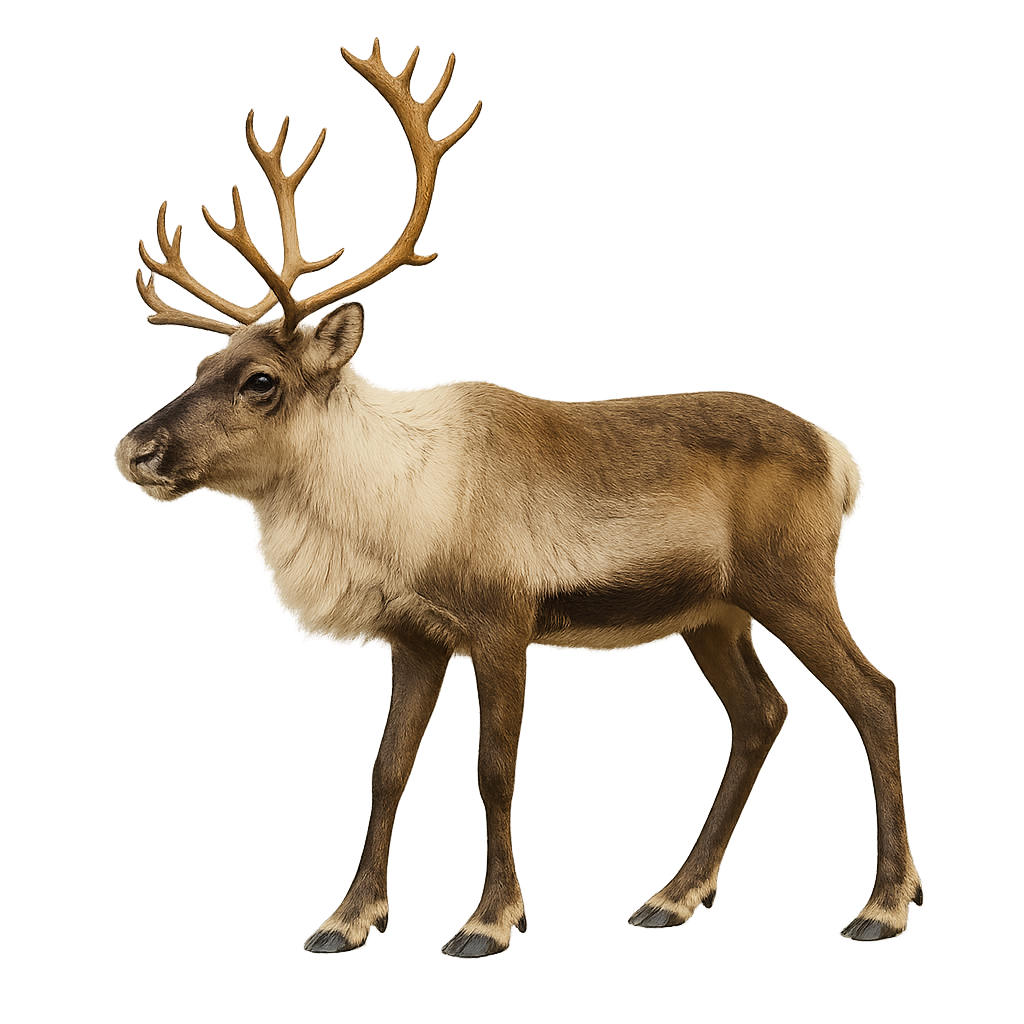Your wildlife photography guide.
Explore the reindeer in detail, study its behavior, prepare your shots.
Where to observe and photograph the reindeer in the wild
Learn where and when to spot the reindeer in the wild, how to identify the species based on distinctive features, and what natural environments it inhabits. The WildlifePhotographer app offers tailored photography tips that reflect the reindeer’s behavior, helping you capture better wildlife images. Explore the full species profile for key information including description, habitat, active periods, and approach techniques.
Reindeer
Scientific name: Rangifer tarandus

IUCN Status: Least Concern
Family: CERVIDAE
Group: Mammals
Sensitivity to human approach: Suspicious
Minimum approach distance: 50 m
Rut period: October to November
Gestation: 220-230 jours
Births: May to June
Habitat:
Tundra and boreal forests
Activity period :
Activity varies depending on season, weather, or human pressure.
Identification and description:
The Caribou, or Reindeer in Europe, is a large cervid adapted to cold and northern environments. It is easily recognizable by its distinctive antlers, which are present in both males and females, a unique trait among cervids. Its thick, woolly coat, typically brown with lighter shades on the belly and neck, allows it to survive in the harshest climates. Caribou populations are found primarily in arctic and subarctic regions, including Iceland, where they were introduced and have thrived in the mountainous and tundra landscapes.
The Caribou is a migratory species, undertaking long seasonal migrations to find food resources. It primarily feeds on lichens, grasses, and tundra plants, which it digs out from under the snow during the winter. The Caribou plays a crucial role in its ecosystem by affecting vegetation and serving as prey for large carnivores such as wolves. However, it is threatened by climate change and habitat loss.
Recommended lens:
300 mm – adjust based on distance, desired framing (portrait or habitat), and approach conditions.
Photography tips:
Approach slowly and discreetly, using a telephoto lens to capture images from a distance, as the reindeer is a rather cautious animal that can move away quickly if it feels threatened.
Photograph early in the morning or late in the afternoon when the light is soft and the reindeer is more active, often feeding or moving through meadows, tundras, or forests.
Capture moments of natural behavior: Reindeer are often seen moving in herds or feeding on vegetation. Wait for moments when the group is visible and can be captured in a natural setting.
Be patient and respectful: Reindeer may migrate over long distances. It is essential not to disturb their natural behavior, especially during migrations or breeding seasons.
Reindeer (or Caribou) is a vulnerable species, particularly due to the impacts of climate change, habitat loss, and disturbances from human activity. It is important to respect their space and not disturb their feeding or social behaviors. Follow local conservation rules to preserve this species and its habitat.
The WildlifePhotographer App is coming soon!
Be the first to explore the best nature spots, track rutting seasons, log your observations, and observe more wildlife.
Already 1 439 wildlife lovers subscribed worldwide

